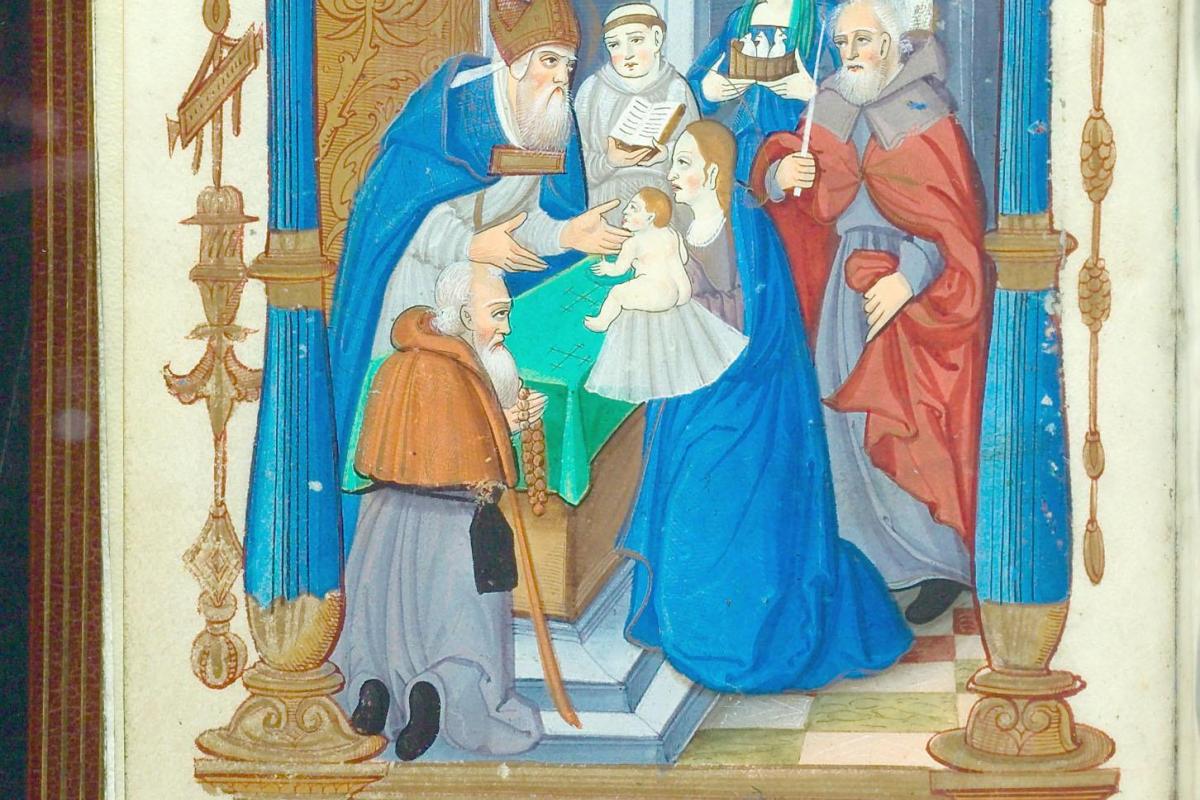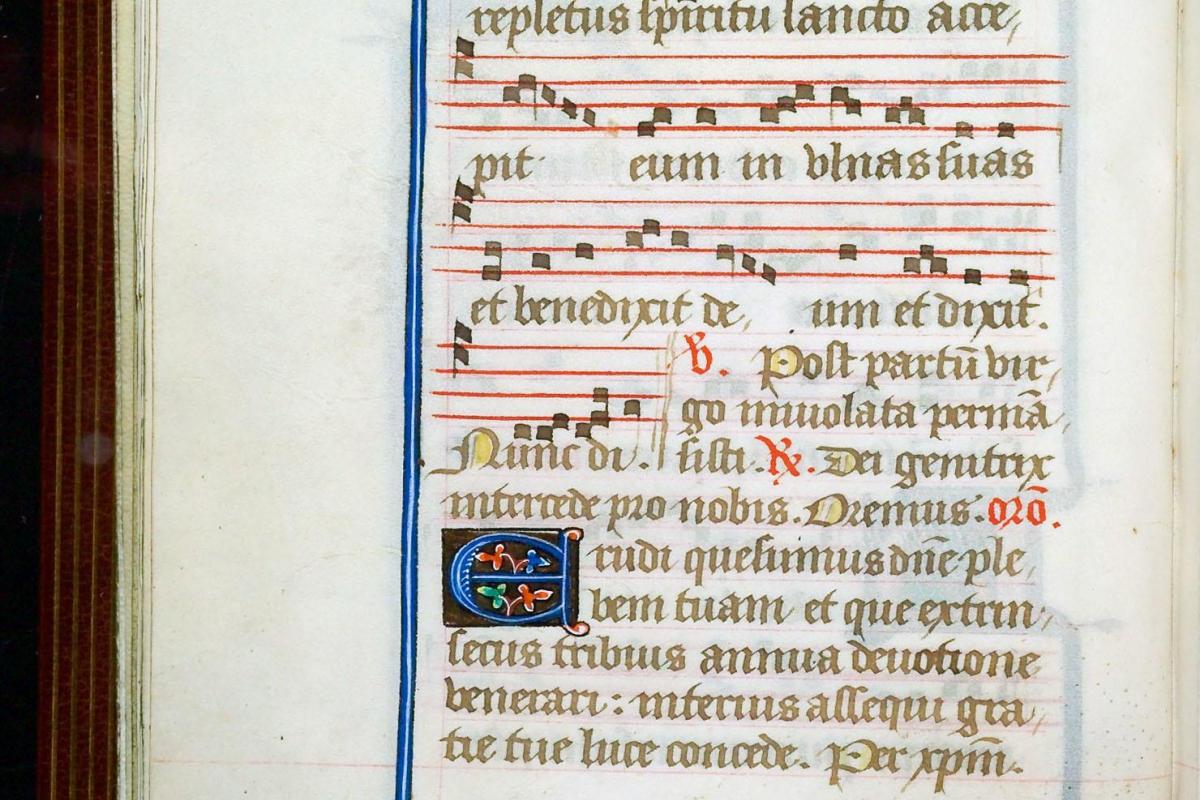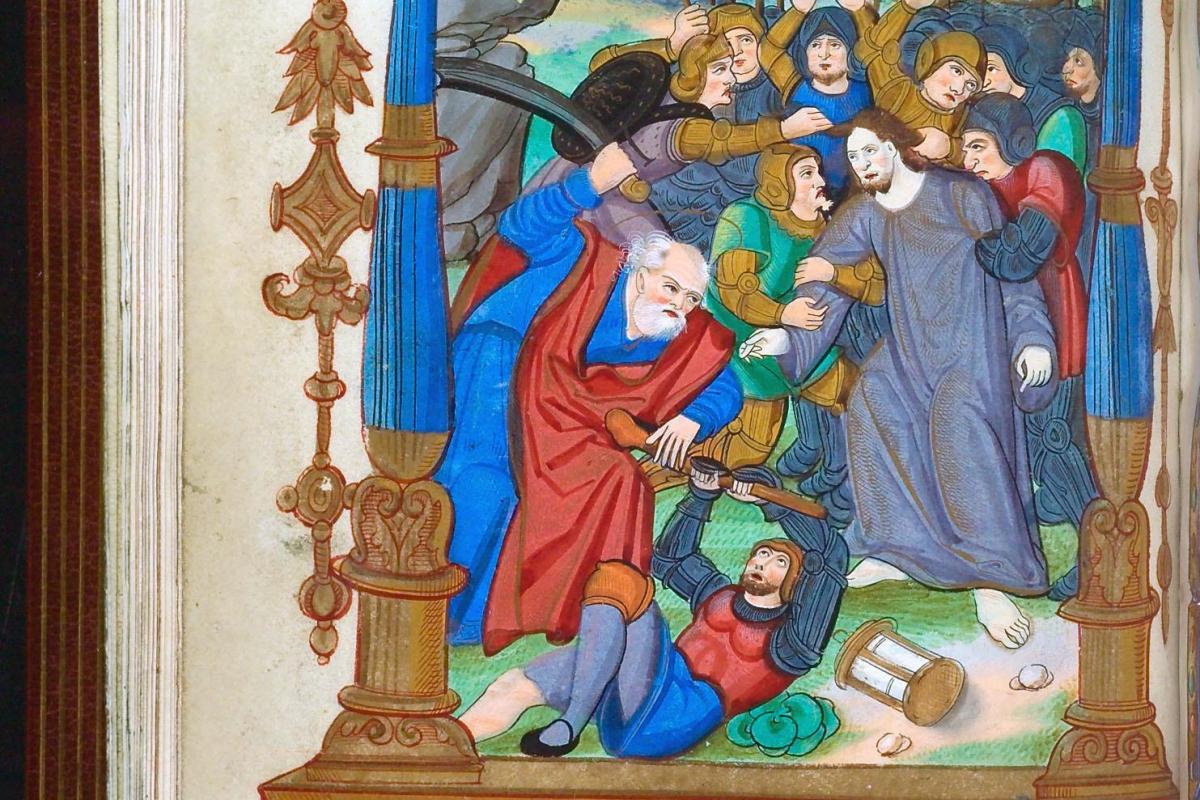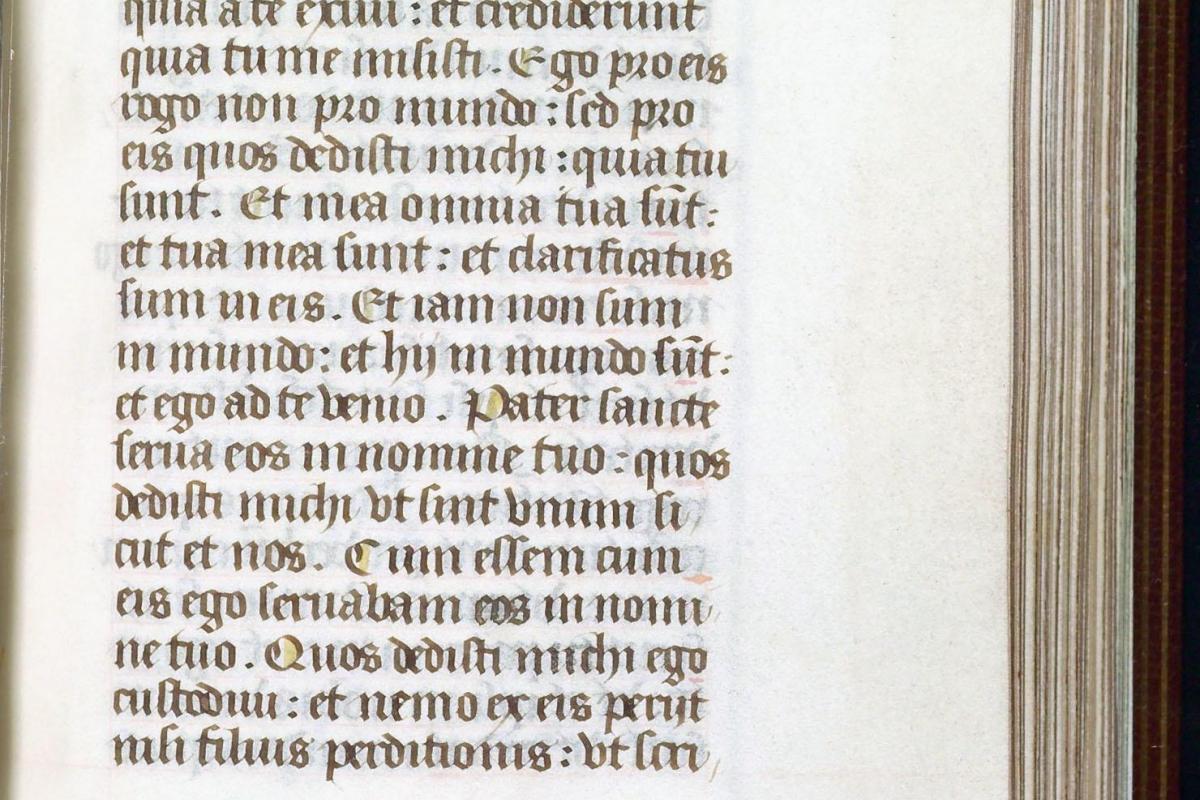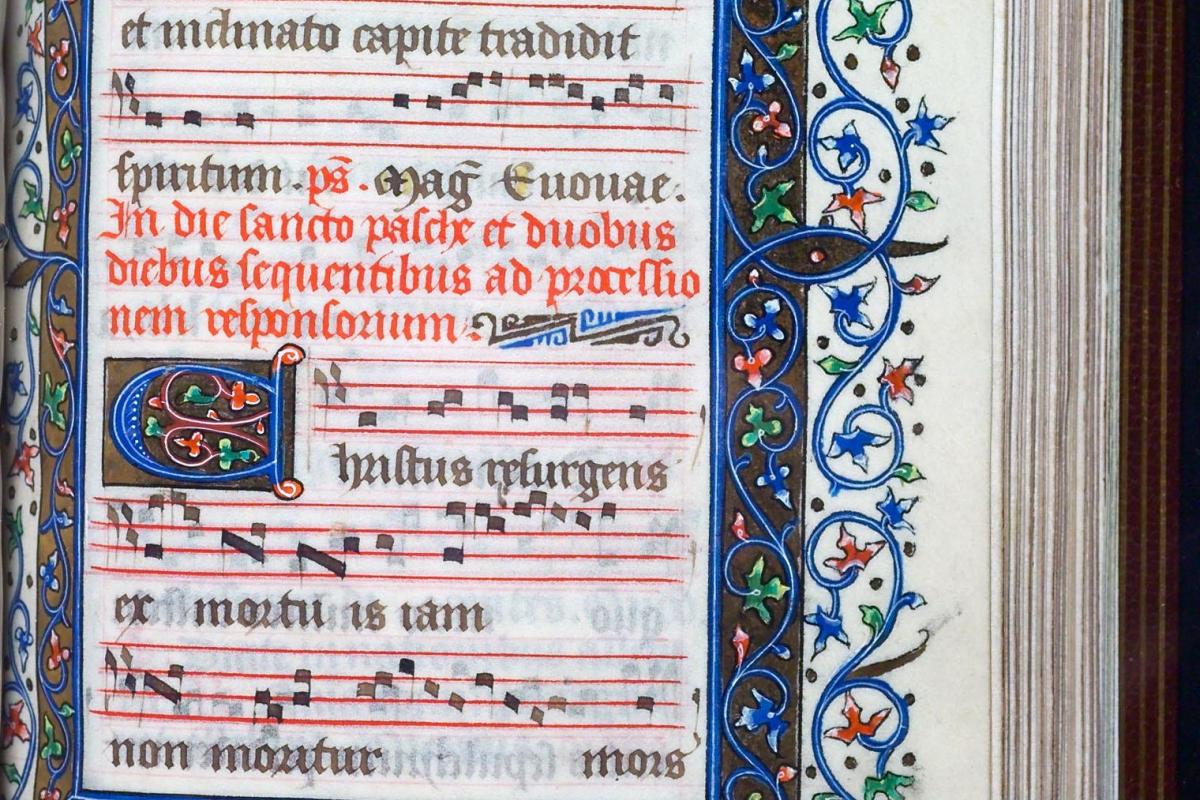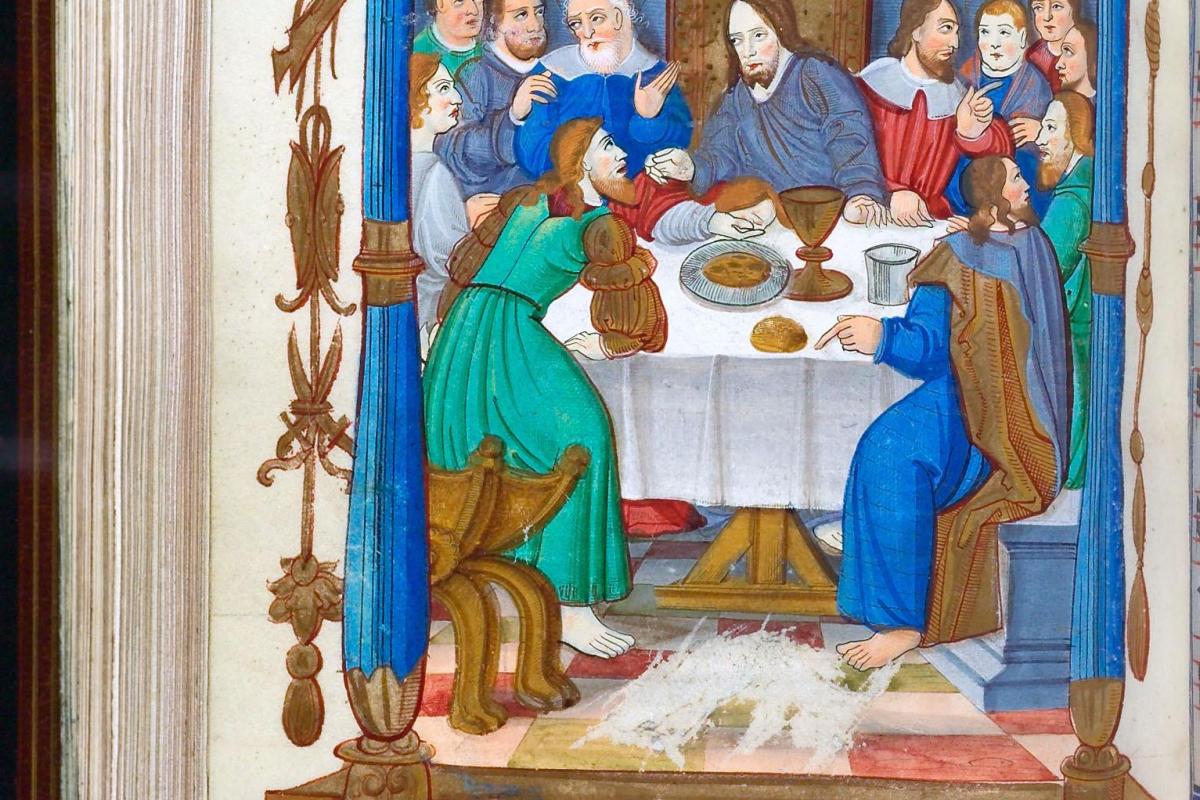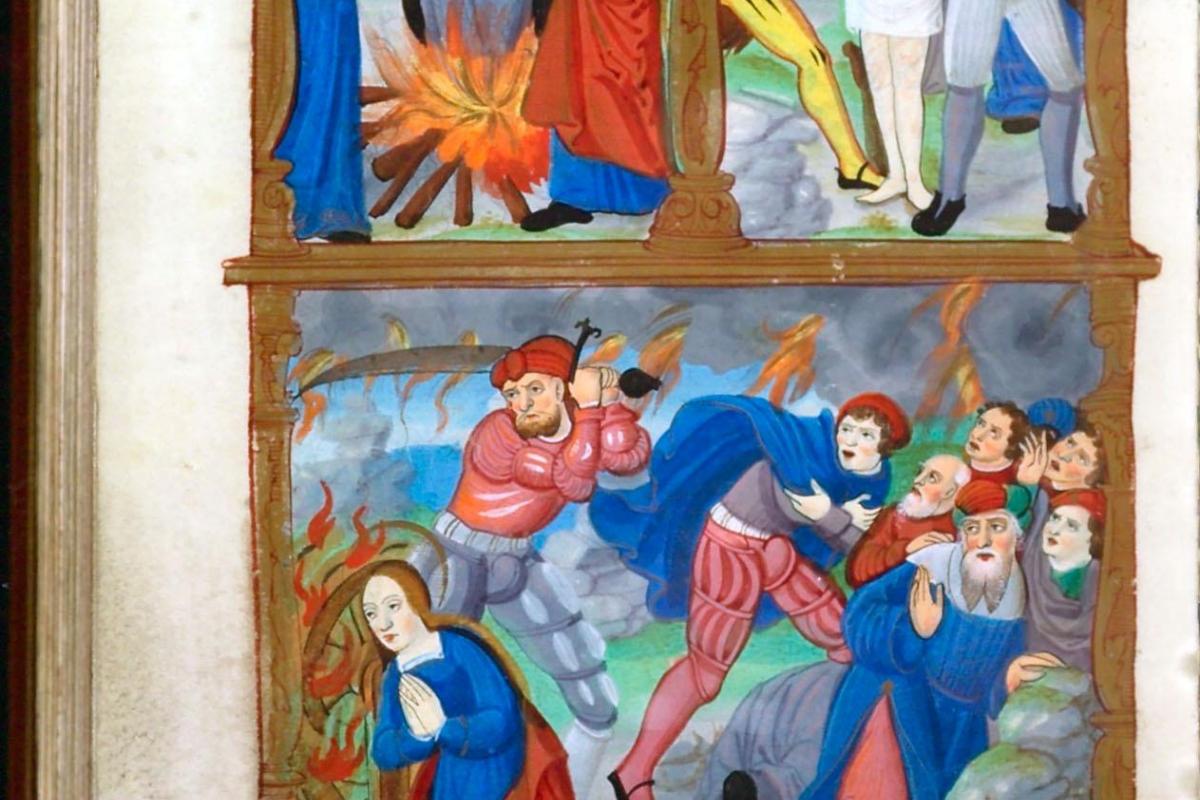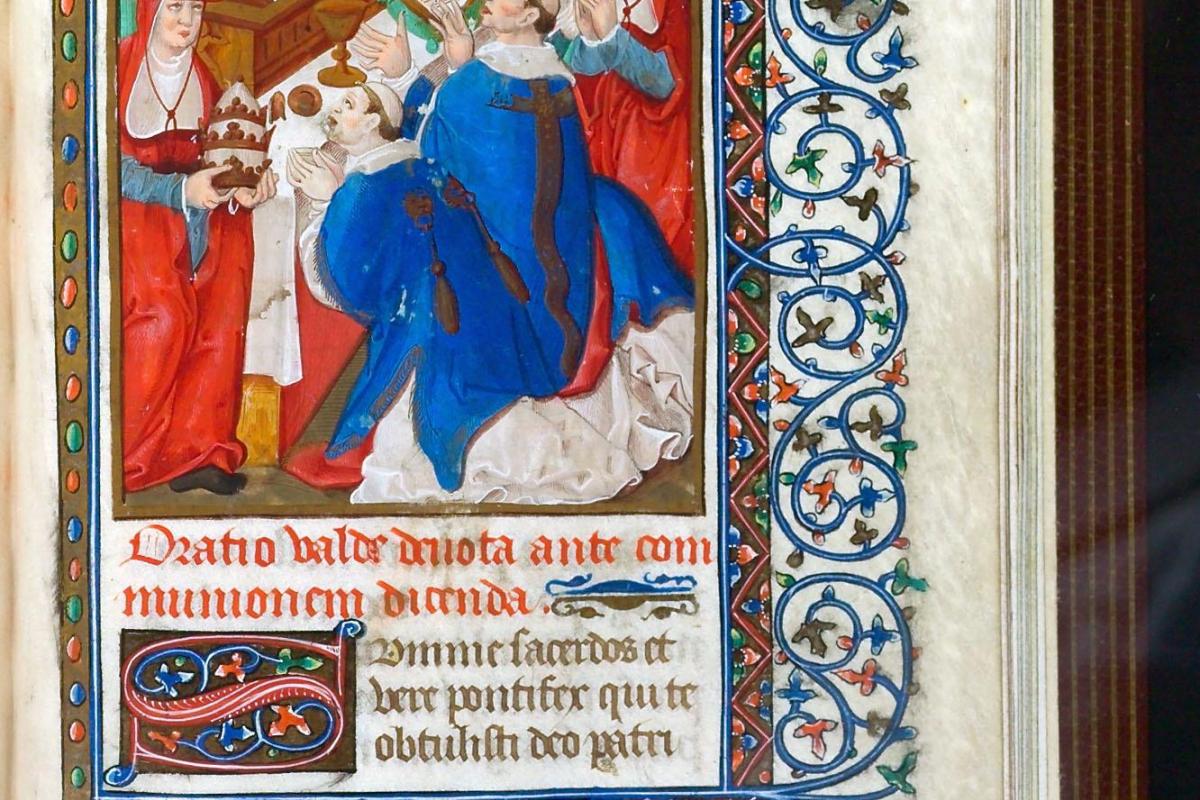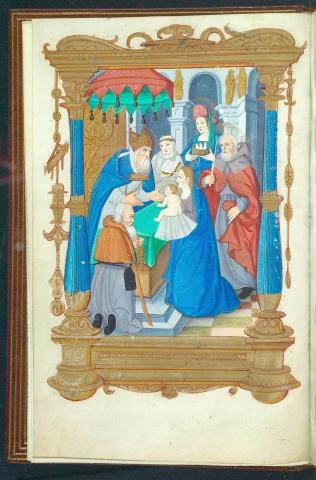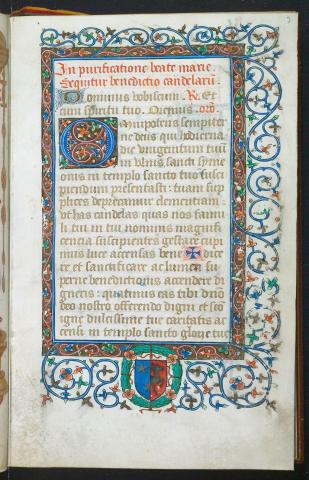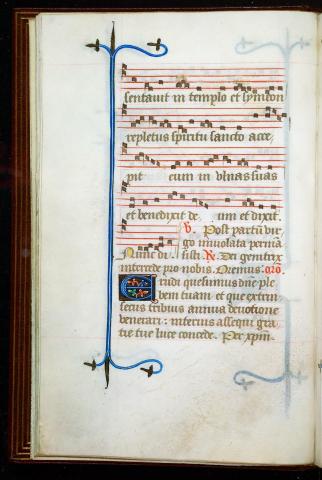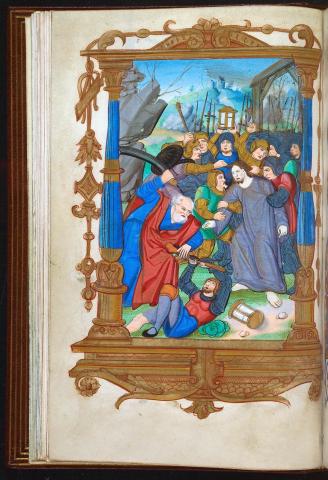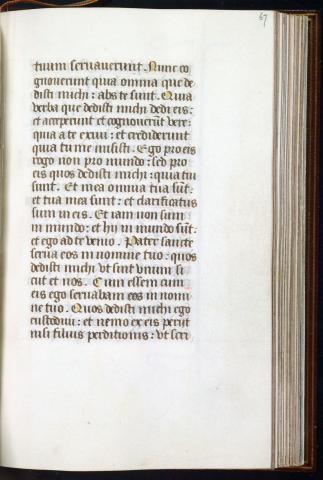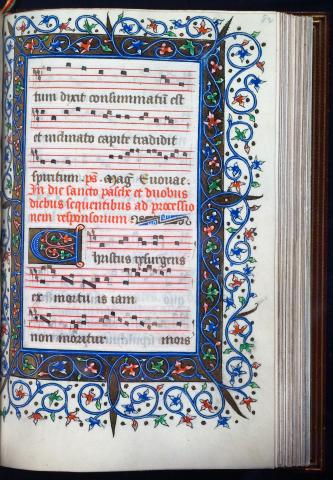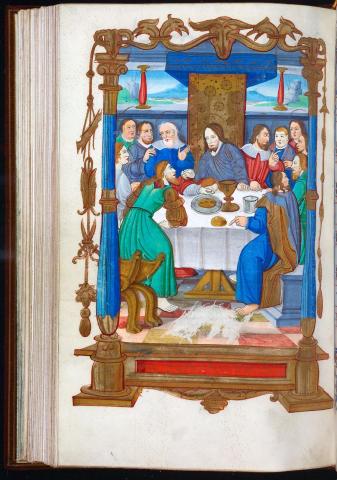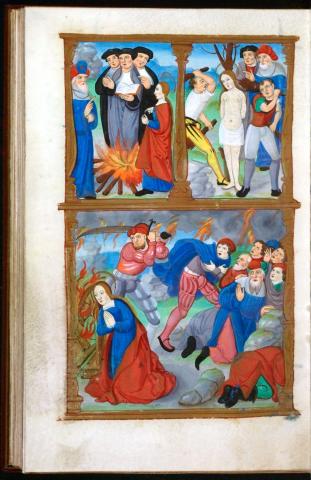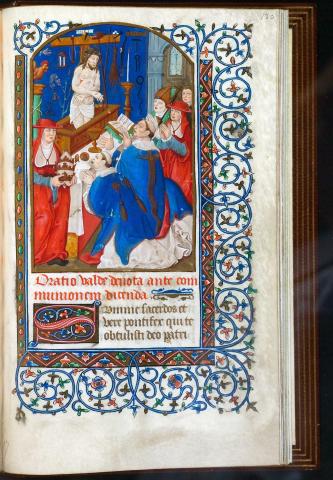Poissy Processional
Poissy Processional
French (Poissy), 1510
- fol.1v: Presentation at the Temple
- fol.2r: text page
- fol.6v: page with music
- fol.26v: The Betrayal
- fol.67r: text page
- fol.82r: music page with border
- fol.88v: The Last Supper
- fol.118v: The Martyrdom of Saint Agnes (top left), The Scourging of Saint Catherine (top right), and The Beheading of Saint Catherine (bottom)
- fol.130r: The Mass of Saint Gregory
Language: Latin
Prayer book and antiphonary used as a processional at a Dominican nunnery in Poissy, France. Written in Latin on vellum, it contains rituals and songs with music.
ink, paint, and gold on vellum
height 17 cm
Reed College Library Special Collections M2149 .C38 1510
Virtual Tour of the Poissy Processional
Reed College Library Special Collections
Poissy Processional Audio featuring vocalist Chellarae Nugent
Sound recording by Jacob Granger, 2019 Medieval Portland Capstone student, featuring music from the Poissy Processional, a manuscript in the Reed College Library Special Collections.
Medieval Portland Capstone Student
As printing became a less expensive and quicker way of making books, illuminated manuscripts in the early sixteenth century remained popular among wealthy individuals who wanted something more personal and unique. Although the name of the original owner of the Poissy Manuscript is unknown, the manuscript has been named after the location of Poissy, France where its original owner was a nun at the Dominican Convent of St. Louis. The Convent of St. Louis was established in 1298 by Louis the IX’s (St. Louis of France) grandson, Philip the Fair. Philip dedicated the monastery to his grandfather and gave his grandfather’s relics to consecrate the nunnery. Poissy was a wealthy and prestigious monastery, its high status and proximity to Paris would have allowed the nuns access to prestigious illuminators and scribes which potentially could have contributed to the level of detail and use of gold leaf decoration that is found within the Poissy Manuscript.
The Poissy manuscript, made in Paris in 1510, was written and illuminated on vellum and contains four-line musical notations as well as a gothic script in Latin. The manuscript contains numerous decorated initial letters throughout and is believed preserved in its entirety of 139 leaves. There are five full-page illuminations, of which four employ the use of architectural detail to frame the illuminations. These miniatures depict significant moments of the life of Jesus including the Presentation in the Temple, the Betrayal, and the Last Supper. Along with the four images of Jesus, a full page illumination is divided into three panels and depicts the Martyrdom of St. Agnes, as well as the Scourging and the Beheading of St. Catherine. The only full-page illumination which does not use a similar architectural framing is of the Mass of St. Gregory, instead, it uses a thick vine and leaf border along the right side of the page. The manuscript begins with the blessing of candles for purification of the Virgin Mary and ends with a mass ritual for Maundy (Holy) Thursday.[1] At the end of the manuscript, a number of lined pages have been left blank, perhaps with the idea that they would be added to at some point.
The Poissy manuscript is in keeping with ideas established in the thirteenth century regarding Dominican Rite liturgy. Within the Dominican order of the Catholic Church, the traditional Dominican rite liturgy has been left as close to the Roman Rite of the thirteenth century as it has been able to.[2] The Dominican Order fought to maintain the use of the Roman Rite mass in the thirteenth century and this conservative approach to the liturgy by the Dominican Order is maintained even today by its continued use of traditional Latin Rite liturgy, especially on Holy Days. This commitment to maintaining a regular liturgy was enhanced by a strong value for education for both friars and nuns. Girls aspiring to enter Dominican convents were to be “puellae litteratae,” “educated girls,” as directed under the Dominican second order’s Constitutions of 1259.[3] Although medieval ideas differed as to what constituted as acceptable levels of education for women, a number Dominican nuns had at least a working knowledge of reading and writing in their vernacular language and in Latin.
The Poissy Manuscript is one of several existing Antiphonaries that came out of the Convent of St. Louis. Another example of this is currently housed at the State Library of Victoria in Australia. This other manuscript, dating from the first half of the fourteenth century, is an earlier example of an Antiphony from Poissy. It is also believed to have been commissioned in Paris and shares many similarities with the later Poissy Manuscript housed at Reed College.[4] These stylistic similarities are seen particularly among the detail of initials within the text, the gothic script and musical notations used, and the vine-like marginal detail of blue and gold that appears on some of the pages. The Poissy Manuscript blends traditional elements seen in Dominican Antiphonies with the individuality and status of the original owner by its use of their heraldic coat of arms and the addition of lavish full-page illuminations complete with gold details.
Within these illuminations, the Poissy Manuscript at Reed innovates from the earlier fourteenth-century example at Victoria. The most important distinction between the two is the inclusion of miniatures that use architectural details to frame all but one of the illuminated pages. This architectural detail seems to be a convention popular in early sixteenth century Parisian illuminated and printed manuscripts and may also be seen in contemporaneous manuscripts of the early sixteenth century from Paris. Within Reed College’s Special Collections, two examples contemporaneous to the Poissy Manuscript feature similar architectural decorative details; an early sixteenth century Psalter and Prayer Book ascribed to the style of the Master of Philip of Guelders[5] and again in the printed Kerver Book of Hours [6], printed by Thielman Kerver in 1510 in Paris. The Poissy Manuscript provides an excellent example of how illuminated Antiphonies and Prayer Books in the Middle Ages incorporated changing artistic styles and the personality of their original owners along with more traditional religious elements, such as in this case, the Dominican Order's use of Roman Rite Liturgy.
Auction catalog, “Valuable Printed Books and Manuscripts, including Natural History,” Wednesday, 19 November 2003, Christie’s (8 King Street, St. James's, London SW1Y 6QT), Auction code and number BLAISE-6853, Auction Administrator, Armelle de Laubier-Rhalley; pp. 36-7 - Quoted with permission
Provenance
1. A Dominican nun at the royal foundation of St Louis, Poissy, with the dimidiated arms azure, three mullets or two and one; gules, a stag argent. The convent's books seem to have left with the nuns, who were expelled in 1792, and dispersed piecemeal.
2. Robert Hoe (1839-1909): armorial bookplate inside front cover; his sale, Anderson Auction Company, NewYork, 1 May 1911, lot 2178.
3. Thomas Jefferson Coolidge Junior (1863-1912) of Manchester, Mass. or his son of the same name (1893-1959): armorial bookplate inside front cover.
4. Episcopal Divinity School, Cambridge, Mass.
Content
Processional for the Dominican Convent of St Louis at Poissy, opening with the blessing of candles for the Purification of the Virgin and ending with the stripping of the altars on Maundy Thursday, where twenty altars in the conventual church are listed, including dedications to St Louis and St Dominic, ff.1-128; ruled blanks ff.128v-129v; prayers to be said at mass ff.130-139v; ruled blanks ff.140-141v. At least twenty-four processionals are known from Poissy, the convent founded by Philip the Fair for noble ladies in honor of the canonization of his grandfather, Louis IX, in 1298. As its name implies, the processional was used for the chants and prayers which accompanied processions and it was, therefore, convenient for each sister to have her own easily portable book. Several of these bear the arms of the sister who commissioned the volume and who would have chosen the additional prayers, as here, to give a more personal content (see M. Huglo, ‘Les processionaux de Poissy’ pp.339-346 in Rituels: melanges offert à Pierre Marie Gy, P. de Clerck, and E. Palazzo eds, 1990).
Illumination
Poissy is just outside Paris, and the nuns turned to the city for their illuminated books. The miniatures are typical of Parisian production in the early 16th century, with a strong feeling for pattern, executed in clear bright colors enhanced by gold. In the full-page miniatures, features and contours are defined by fine black lines to emphasize the expressive faces and gestures of the figures. The classicizing Renaissance framing contrasts with the archaicising gold bars and borders of thick vine stems on the facing rectos. Although the same border hand worked on the concluding section of prayers, the miniature of the Mass of St Gregory is executed in a more painterly technique, perhaps influenced by Jean Pichore, documented in Paris from 1502-1520. The borders, probably derived from earlier books in the convent's possession to evoke its exalted origins and history, are typical of manuscripts for Poissy at this date, when the nuns were cutting up earlier manuscripts to add initials and borders to their new books. It is, however, more usual for the Processionals to be illustrated with historiated initials or small miniatures, as in the contemporary volume now in the Free Library of Philadelphia, ms Lewis E 7 (see Leaves of Gold, Manuscript Illumination from Philadelphia Collections, J. Tanis ed., 2002, pp.134-6). By commissioning five miniatures, the noble owner of the present Processional obtained an especially lavish volume, worthy of the prestigious convent to which she belonged. The full-page miniatures are as follows: Presentation in the Temple f.1; Arrest of Christ f.26v; Last Supper f.88v; three scenes of the life and martyrdom of St Catherine f.118v. The three-quarter-page miniature is the Mass of St Gregory f.130. Estimate: £18,000-25,000 US$30,000-41,000; €27,000-36,000.

